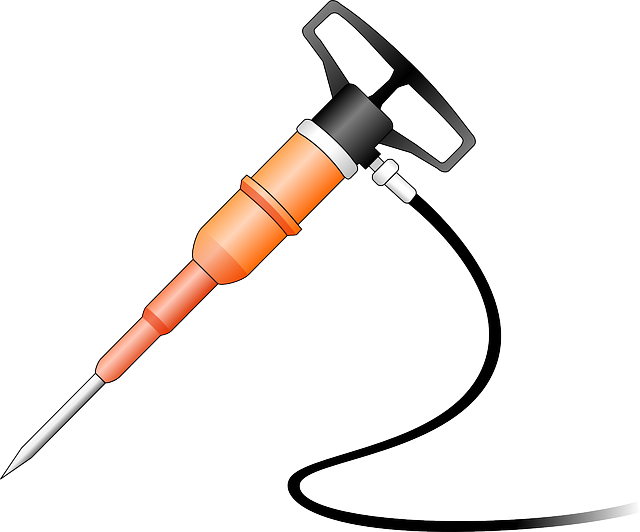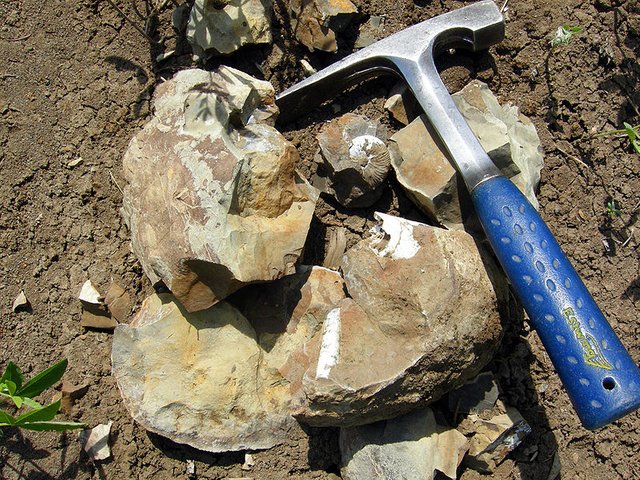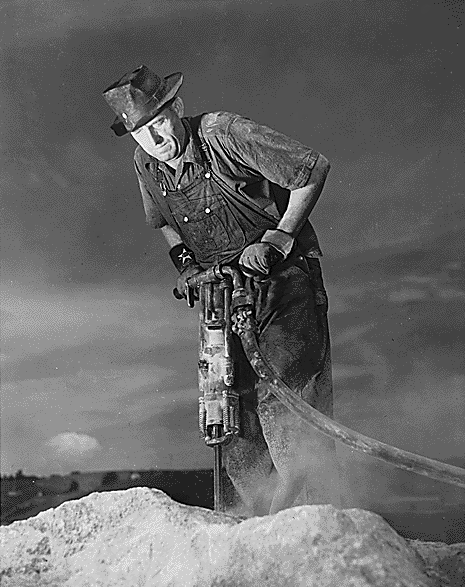Did you know you can break rocks with air? Of course yes!
Over the course of time, things have changed as well as the methods at which we go about performing tasks. In the stone age basic tools were used to do almost every task and this increases the time at which the task would be accomplished.
Take for instance, digging a hole. In today’s world, you would probably suggest the use of a pick axe and shovels which are quite efficient (depending on the strength and agility of the worker using the tool). Using a pick axe, the worker would need to move the axe well over his head and behind to accumulate enough momentum for the pick axe to hit the ground and break the ground. The higher and farther the axe goes, the more the force that hits the soil but I bet you, the worker cannot apply the same force on the soil for 50 consecutive hits, (he would have to rest his muscles). Now what if the site to be dug is filled with concrete or is a rock? Well, that is more work and requires more energy.
In order to save us the stress of using a pick axe, you might want to suggest we use an excavator for the job but even an excavator might not be able to do the job or be restricted by space. Then the question comes up – what then can be used to break these rock or concrete without using so much energy as with a pick axe. Well, my answer is – let’s use a hammer and a chisel!
Did you just laugh at me? Well, that was expected but I am darn serious about using a chisel and hammer! Yes we’ll use a hammer to hit a chisel on the concrete surface to break it. Still wondering what I’m up to? Stay a little longer and you’ll see how that can be achieved.
Instead of using the basic pick axe, a tool that has found application over the years for breaking into hard surfaces such as rocks and concrete is the JACK HAMMER. You might want to ask – “how is the jack hammer related to a hammer and chisel?” well, it is in all entirety just that. The only difference is how the hammer drives on the chisel. But first let’s take a detour.
Pneumatics!
My friend in steemit @adetola wrote something on pneumatics and that is the power harnessed in the jack hammer. Simply put, pneumatics is using the power stored when air is compressed. In pneumatics, the air is first compressed to harness the energy that lies therein – more of like charging a battery before you can use it.
Air is made of various molecules of gases that are constantly in motion. If these gases (as in air) are taken and enclosed in a smaller container, they tend to collide with each other and the walls of the container more of like looking for a way out. Once there is an opening in the container, the molecules simply rush through the opening and there is a burst of force as a result of the rush.
A little experiment;
Take a balloon and blow air into it. Blow as much as you can but don’t let the balloon burst. Now hold th balloon tip tight and release it.
I expect the balloon to fly off. This flying off is as a result of the air you compressed (by blowing so much into so little space) trying to escape thereby giving enough thrust to the balloon to fly!
Pneumatics is the science and technology of pressurized air—using piped, compressed air (or a similar gas, such as nitrogen) to transmit force and energy. source
Pneumatics find application in a variety of applications ranging from the brake system of heavy vehicles, robotics, car washes and many other engineering applications.
You can take a look at the post to learn more.
Back to course; remember I said using a hammer and a chisel is efficient in breaking the rock or concrete well, I still have not changed that view. Why not let’s do another experiment (as always)
Take a chisel and hammer and try use it to break some concrete (please don’t break your house).
Try make an attempt to break a square inch of the rock/concrete. How long did it take you? I’m sure it took quite a while to do that and of course a lot of energy. Now imagine you have about 50 square meters to break (lol, maybe we should just give up!).
Now imagine having a hammer and chisel coupled in one place and the effect of hitting the chisel with the hammer can be performed repeatedly in a mechanized manner, then we can break as much concrete as possible! Today, I would be talking about the tool that does this seamlessly – the jack hammer (taking the hydraulic type as reference). I was inspired to write about this when I saw a TV program on discovery family explaining how the jack hammer is made and its components. Don’t blame me, that was the first time I really took time to consider the machinery and so, why not share the knowledge?

THE JACK HAMMER. SOURCE: PIXABAY
The jack hammer
To some (or most) people, the jack hammer is not new. Especially if a group of workers have been to your neighborhood (or just outside your window) to do some road rehabilitation or concrete breaking. That rattling, ear shattering noise you hear is most definitely a jack hammer.
The jack hammer is a device that is used during construction or demolition to break concrete or rock. Compared to sledge hammers and chisels, they are 100% efficient. The (pneumatic) jack hammer is a pneumatic tool that uses the power of compressed air to drive a hammer onto a chisel to produce ground breaking effects. There are other types of jack hammers that are electrically or hydraulically powered but the pneumatic type is the most common.
Peeping inside the hammer
The jack hammer has distinct parts that perform specific functions to produce the end effect of pounding on hard surface rapidly.
- THE COMPRESSOR
Oh well, the compressor is not located in the jack hammer, it is a separate element but without it, the jack hammer cannot work. Simply put, the compressor provides the “fuel” that the jack hammer needs to operate – compressed air.
A compressor is usually powered by an internal combustion engine that draws air from the atmosphere and then stores it at a particular pressure in a reservoir where it is then passed on to the jack hammer using a hose.
One of the reasons compressed air is one of the best ”fuels” for the jack hammer is because there is no loss in energy even in a long distance (as long as the hose is not leaking).
THE VALVE
The valve performs a rather basic operation too. It switches from one point to the other allowing the flow of the compressed air through one port while allowing air through the other. The valve is positioned in such a way that the compressed air can be directed through one channel at a time.THE HAMMER
If you recall, I mentioned that this piece of machinery makes use of a hammer and chisel. Well. I wasn’t joking. The jackhammer actually has a hammer (also called the piston or the pile driver) in it but instead of the hammer being handled by a person, the hammer is moved by the pneumatic action in the device. Talk about letting the air do the work!THE BIT
Well, we can also call this the chisel and as such, that is the part of the jackhammer that hits the ground. The impact of the hammer on it is what transmits to the ground breaking force as the end result. Simply put, the bit is the messenger that deals the blow that breaks grounds!
How the groundbreaking happens
Well, apart from the ear rattling noise that the jack hammer produces, it really is a hard worker and gets (most of) the job done. Question is, how?
As mentioned earlier, the jackhammer is powered by pneumatics (compressed air). The compressed air is fed from the compressor reservoir onto the device and when the operator presses the knob or pulls the lever, a valve opens and the air (in all its power) rushes into the device. With the position of the valve directing the air to the position of the hammer, the hammer slams on the bit and the valve switches to the other position where the air is directed to push the hammer up and the process repeats all over again.
The pounding of the hammer on the bit and thus on the ground shows the extent at which power in air can be used. This pounding can occur up to 25 times in a second making an approximate of 1500 pounds in a minute (now that’s a lot of pounding). Of course this is enough to break through concrete and rocks and also create a quite offensive noise.
Bits in the jack hammer come in various sizes and shapes based on the required outcome. Talk about using a chisel and hammer to break through concrete in split seconds (cool right?)

Just as a side note, the picture beside is that of a Pancor Jack hammer and as you can see, its not used for breaking rocks. It is a Gun and from what i read about it, it really is quite sophisticated as it is gas operated. Unfortunately, the shotgun did not make it to mass production and the best you can see of it is in video games but from the look of it, it should give the jack hammer effect!

CONCLUSION
As simple as it looks, the jack hammer shows how the power in air can be compressed even as much as breaking rocks and concrete. The mode of operation of the hammer is a bit more complicated but this post shows the simple approach to it.
So, when next you see a construction worker pounding away on some concrete and making that annoying noise, why not take a minute and ignore the noise but appreciate the wonder in the power that can be found in air.
As the case may be, air can be as powerful as it can be. Talk about the hurricanes and tornadoes and when channeled into the right devices, you can achieve ground breaking exploits.
REFERENCES
Jackhammers
Jackhammer
How jack hammers work
Pneumatics
If you write STEM (Science, Technology, Engineering, and Mathematics) related posts, consider joining #steemSTEM on steemit chat or discord here. If you are from Nigeria, you may want to include the #stemng tag in your post. You can visit this blog by @stemng for more details.




Up until i read this post when i hear construction workers make so much noise with their jack hammers: i get really infuriated
but i know better now: thanks to you i now have some form of profound respect for this equipment.
Great post I must say: i look forward to reading more of your posts
thank you for your kind comments!
you write well too, i hope to see something from you too
Nice one here. I would like to know what the side effects or long term effect to the user will be.
the noise from the operation is very loud and might damage the ear if not properly prevented by using ear muffs. also the vibration of the device is said to affect blood circulation on the fingers. Operating the device periodically or using models that reduce vibration is one way to prevent that.
Alright. Except that the vibration cannot be reduced since it needs that motion to break the rock. It's nice though
This is quite nice, the title is fascinating.... So, the user still have to pressurize it to use it?
By pressurise, do you mean having to compress the air?
Ehn.. Will he apply pressure from top for movement on the hammer on the bit? Abi it's just to direct it?
the only thing the operator does is to hold the tool in position and press the switch to "start" the tool.
Nice.. Someone like me would still get tired easily though.
i know p:)
You know? Are u saying I'm Lazy?
Mehm what you don't know and you don't want to know... You would not know
I never knew the tech behind that stuff is air.... Nice one boss... Another one added to the books on my library
im glad i could help you learn something new
Thanks man
Straight to the point tech. The power of air cannot be over emphasised. Am thinking what about a gas powered jackhammer anything like that? I think it should be more powerful
We used a jackhammer during my industrial attachment it was electric.. But i thought more of it like it used gears and the likes.
I didn't even realize it worked on air.
there are actually the electric variants too and i guess thats the one you used.
That has to be.. It was handy with no nozzle.
I'm usually wary of everything under pressure as they are capable of doing a lot of good as well as bad. I always give a safe berth when I see workers handling the jackhammer. It's awesome to see how it works. Good article here.
yeah, fluids under pressure are like prisoners waiting for an opportunity to jail-break, they can do anything.
im glad i could pass some knowlege across. cheers!!
thank you
Pneumatics and hydraulics have indeed being good ways of performing work with less human effort. Its astonishing to see how the compressibility of some fluids (or incompressiblility of others) are being taken advantage of. Nice post, I enjoyed it. I'm sure gonna read that post by @adetola
very correct sir, thanks for visiting here!
You welcome
Haha... You should. Its just few weeks ago.
Done.... and wasn't disappointed
Haha... Am glad you went through. Hoping to see some educative stuffs from your blog soon.
You bet
Never knew it worked on air, very enlightening
thanks, im glad i was able to inform you
Yes, jethammers are really powerful. Another tool is water jet, u can cut metals using water flow. These machines show that how can an ordinary thing be so powerful with the help of technology.
Good article, man. Cheers!
you are right!
a lot of these fluids can do wonders when compressed. All thanks to tech, its easy to see the wonders.
i wanted to mention you to see the pancor jackhammer. Do you know about it?
just saw video on utube. That thing looks super cool. May b arent used at present times.